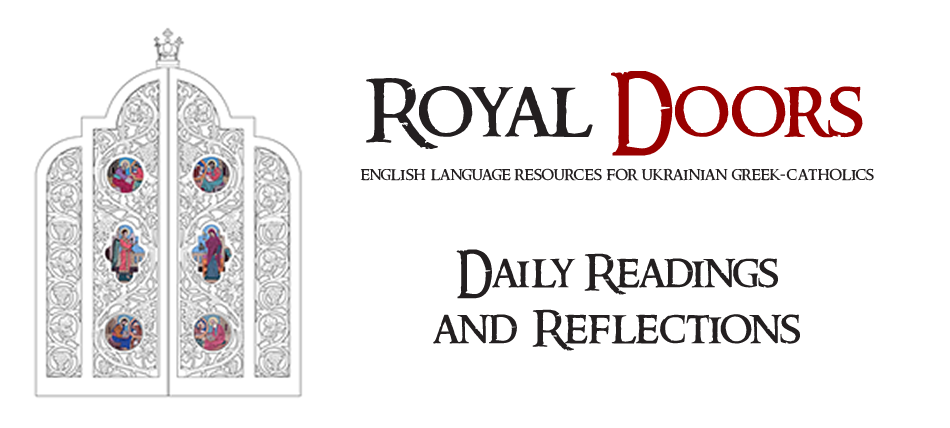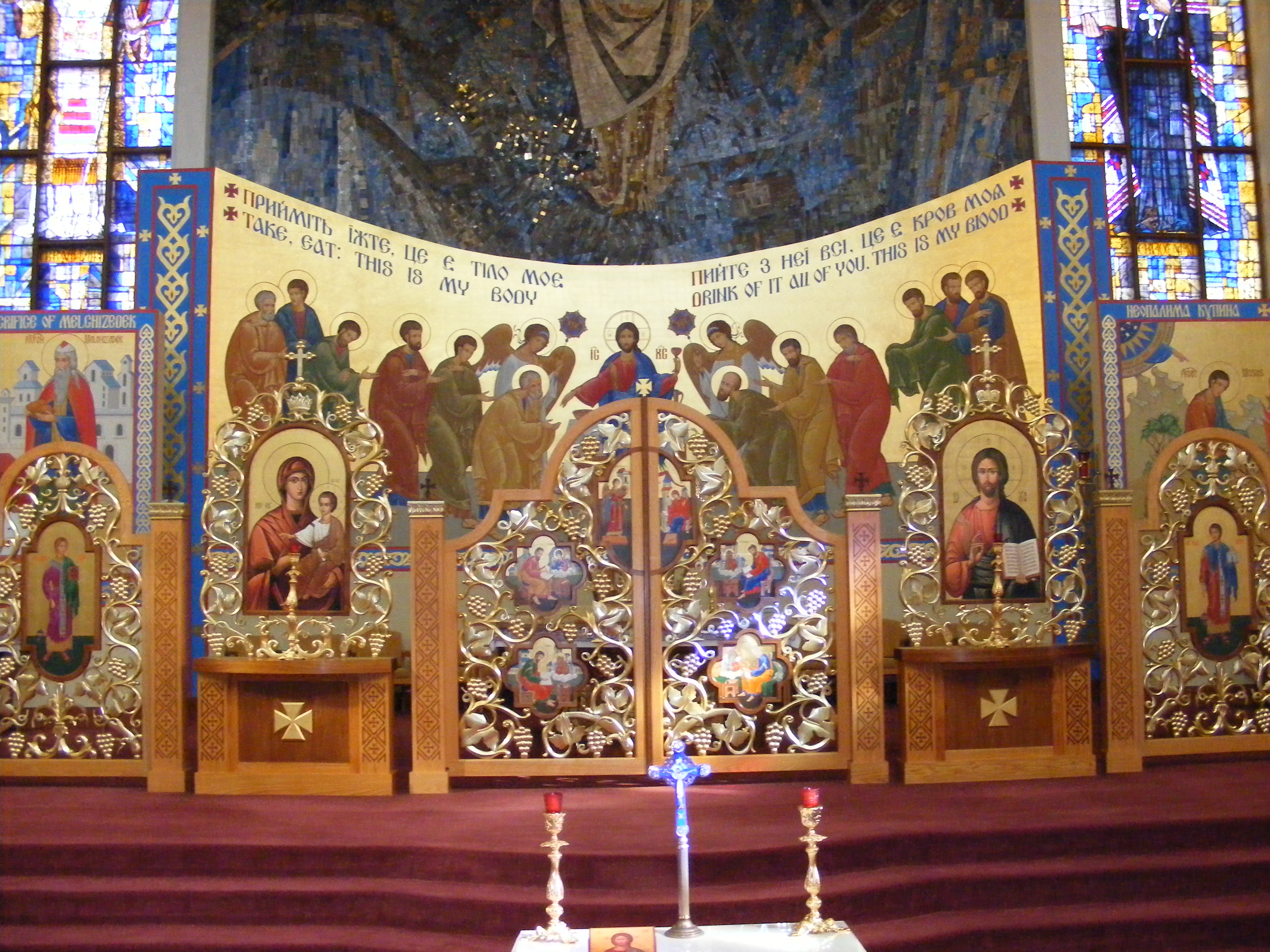by Brent Kostyniuk
One of the most distinctive features of the interior of a Byzantine church is its iconostasis, a richly decorated icon screen which establishes the altar area. Far from being a wall which isolates the nave from the sanctuary, theologically the iconostasis actually serves to bring the two together.
In Byzantine theology, the sanctuary is believed to be heaven placed on earth. It is the Holy of Holies. In this way, events which are part of the spiritual realm are made available to those on earth. This may be likened to the great Temple in Jerusalem. The holiest and inner-most portion was where the Ark of the Covenant was kept, the Holy of Holies. This was separated from the second larger part of the building’s interior by a curtain, the “veil of the temple.” Similarly the iconostasis is a veil behind which can be found the Holy of Holies containing the consecrated Eucharist—the manifestation of the New Covenant.
The many icons which virtually cover the iconostasis help us to make the passage between earth and heaven with their images of Christ, the Theotokos—God bearing one—and the saints. As with all icons, they are “written,” expressing not the iconographer’s artistic talent, rather a theological truth, an event in salvation history, a model of saintly life which we are called to emulate. Thus, it is through these images that we are connected to heaven and the saints who dwell there.
As we meditate on the icons, and those truths which they convey, we can appreciate why they are often referred to as windows into heaven. Icons present not earthly images, but spiritual realities. When we see the image of a saint, it is not as he or she appeared on earth, but rather as they are now, glorified in heaven. Often icons also contain symbols or elements particular to a saint’s life, helping to remind us of the lessons which can be learned from their lives.
In turn, we may contemplate our own mission to become saints. Of course, central to all this is Christ, the true connection between the heavenly and earthly realms. The notion of bringing heaven and earth together is expressed in Hebrews 10:19-20, “Therefore, brethren, since we have confidence to enter the sanctuary by the blood of Jesus, by the new and living way which he opened for us through the curtain, that is, through his flesh.”
Central to the iconostasis are the Royal Doors. These symmetric doors [often] remain open throughout the Divine Liturgy, offering a connection between the nave and the altar, earth and heaven. They are used by the priest or bishop when he leaves the sanctuary at various times. The Gospel Book is carried through the Royal Doors before being read. Most importantly, however, it is through the Royal Doors that the Eucharist is carried for distribution to the faithful.
The Royal Doors at St. Basil’s Ukrainian Catholic Church in Edmonton are typical of this element of church ornamentation. Worked into the ornate grapevine fretwork from which the doors are formed are icons of the four evangelists, two on each door. As well, split between the two doors is an icon of the Annunciation. Thus, anyone meditating on the Royals Doors will encounter the beginning of the Gospels as well as their fruition.
The Royal Doors are always flanked on the right with an icon on Christ, often depicted as the Pantokrator—all powerful—holding an open Gospel Book; the book not only of salvation, but of judgment. Pantokrator may also be taken to refer to God’s actual power; God who does everything. Thus, Christ Pantokrator has come to suggest Christ as a mild but stern, all-powerful judge of humanity. On the left of the Royal Doors is an icon of the Theotokos, often depicted holding an infant Christ, symbolizing His Incarnation. Therefore, standing before the Royal Doors, we see that all things take place between Christ’s first and second coming.
Following tradition, at the middle point on each side of the iconostasis are the Deacon’s Doors, so called because it is the deacon who most frequently uses them. As with all the doors, they open inwards towards the sanctuary to avoid obstructing the iconostasis. The Deacons’ Doors generally feature icons of sainted deacons, notably St. Stephen the Protomartyr. This is the case with one of the Deacon’s Doors at St. Basil’s, while the other features an icon of St. Lawrence, who was also patron of the local bishop at the time the iconostasis was installed.
On occasion, the side doors hold icons of angels and are thus referred to as the Angel’s Doors. At St. Basil’s the iconostasis is unusual in that it contains both Deacon’s Doors and Angel’s Doors, with icons of the Archangels Michael and Raphael.
St. Basil’s iconostasis is constructed on a single level or tier, although iconostases are by no means limited to this. In its most elaborate form, an iconostasis has five tiers of icons. Higher levels are dedicated to the New Testament saints and Church Fathers, the Twelve Great Feasts of the Byzantine liturgical calendar, the Old Testament Prophets and Patriarchs, and the Twelve Apostles.
Linking earth and heaven, the iconostasis provides those who gaze on it a glimpse of the next world.
This piece first appeared in The Prairie Messenger. Reprinted with permission.



